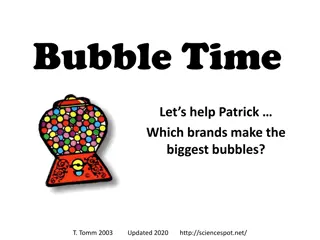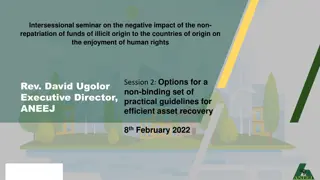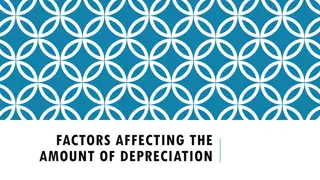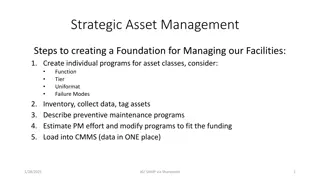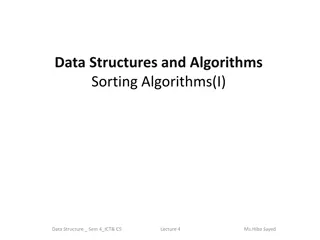
Japanese Asset Bubble of the 1980s: Economic Dominance and Market Speculation
Explore the rise of Japan's economy post-WWII, including the evolution of keiretsu conglomerates and dominance in industries like electronics. Learn how the 1980s saw financial liberalization, leading to stock market speculation and significant changes in the business landscape.
Uploaded on | 1 Views
Download Presentation

Please find below an Image/Link to download the presentation.
The content on the website is provided AS IS for your information and personal use only. It may not be sold, licensed, or shared on other websites without obtaining consent from the author. If you encounter any issues during the download, it is possible that the publisher has removed the file from their server.
You are allowed to download the files provided on this website for personal or commercial use, subject to the condition that they are used lawfully. All files are the property of their respective owners.
The content on the website is provided AS IS for your information and personal use only. It may not be sold, licensed, or shared on other websites without obtaining consent from the author.
E N D
Presentation Transcript
Lecture 7 The Japanese asset bubble of the 1980s
Background Japan s highly traditional society experienced significant changes after WWII, due, in part, to the Westernizing influences of the occupying Allied Forces. Japanese industry was prior to WWII dominated by large family-controlled industrial and financial business conglomerates known as zaibatsu, which evolved into keiretsu business conglomerates in the latter half of the twentieth- century. Keiretsu is a set of companies with interlocking business relationships and shareholdings Typically keiretsu conglomerates were arranged in the form of a series of interlocking industrial corporations organized around a Japanese bank, which provided banking and financial services to the industrial corporations. This system helps insulate each company from stock market fluctuations and takeover attempts, thus enabling long-term planning in projects. It is a key element of the manufacturing industry in Japan. By the late 1970s, Japan s use of assembly-line robots in automobile manufacturing, which made human error non existent and improved overall quality. The U.S. automobile industry was still assembling cars largely by hand.
By the 1970s and 1980s, Japan extended its domination to the global electronics industry as it manufactured the majority of the world s consumer electronics products and introduced innovative and revolutionary new products. Japanese electronics manufacturers also established a strategic foothold in the burgeoning computer hardware industry. Nintendo monopolizing the market for semiconductor chips, circuit boards and other computer components nearly everything except for CPU chip production, which was still dominated by American companies. Japan s Economic Miracle of the late-twentieth century caused the country s standard of living to soar to among the highest in the world and its people had the world s longest life expectancy. Japan s specific brand of capitalism was different to the economies we have looked into now: The role of authorities was wide-ranging, but largely undefined. The government had large informal control of the market through its agencies. Japan still had strong elements of feudalism and hierarchy in its society. Employment mobility was low. People joined a company for a lifetime of work. Production was geared primarily towards exports to the world. Companies focused on long-term planning with bank loan support.
The 1980s The Japanese financial system did not traditionally depend on the stock market in comparison to the US. The Japanese culture was hierarchical and respected the established social order, instead of prioritising individual profit. Japan had huge trade surpluses. They used their surplus to buy US assets and Treasury bonds. The 1980s saw increasing liberalisation of the stock market and the financial system in general. Foreign banks could buy Japanese government bonds. Restrictions on exchange trading removed. Commercial banks more free to set their interest rates. In 1984 the government allowed companies to trade securities without paying capital gains tax on profits. They could now borrow and issue bonds abroad as well. The stock market increase made speculation in the stock market very lucrative.
The changing financial portfolio of businesses By the end of the 1980s most industrial companies listed in the Tokyo Stock Exchange operated and traded in complex financial products. Over half the reported profits of the largest players internationally renowned companies such as car manufacturers, Toyota and Nissan, and consumer electronics firms, Matsushita and Sharp- were derived from speculation (Chancellor, 2000, 291) For some businesses their speculative activities overshadowed any other part of their business. But not all new financing was for speculation. Japanese businesses where technologically leading manufacturers, and some of this cash led to increasing investment in goods and services. Which shows that it was not easy at the time to see which part was speculation and which genuine investment.
The Nikkei has not reached again its January 11, 1990 level of 38,170 basis points. Nikkei 225 Index as of 11 July, 2024 is at 42,224
The property boom Land holds a special position for the Japanese. Its ownership continued to convey status in a country which still had vestiges of feudal society. Between 1956 and 1989, land prices increases by 5,000%, while consumer prices merely doubled. During this period in only one year (1974) did land prices decline. Acting on the belief that land prices would never fall again, Japanese banks provided loans against the collateral of land rather than cash flows. Banks increased lending against property even for smaller companies. The rising value of land became the engine for the creation of credit for the whole economy.
Land value across all major cities in Japan increased until 1990-1, and then there was a decade of negative growth.
Residential and commercial land value spiked in Tokyo, more than the rest of the country, showing the bubble in values in the economy during this period.
Nikkei and land value index The real estate prices started to decline after the stock market clash. The initial bubble was both in the stock market and in asset-land value. But the collapse started from the stock exchange, and land value followed after.
The bubble collapse End of 1989 the Nikkei index was approaching 40,000 index points, up 27% on the year, and nearly 500% in a decade. Nomura securities was forecasting that the Nikkei would reach 80,000 by 1995. January 1990 Yasushi Mieno becomes governor of the Bank of Japan. There was no sudden collapse in one day. By end of Jan. 1990 the stock exchange had lost 2,000 points. Property prices where still rising for the first half of 1990. Monetary policy was increasingly tighter. Mieno raised the interest rate to 6% by August 1990. The stock market continued to collapse, and by September 1990, Nikkei fell below 20,000 points. The government tried to stop the fall by instructing banks and public pension funds from selling. By August 1992, the Nikkei was at 14,309 points, 60% below from its peak.
Monetary aggregates The money supply was severely restricted after the collapse of the stock exchange. See above a fall in M2 There is also a reduction in claims on private sector- we will discuss deleveraging later.
Decline of GDP growth The economy went into lower GDP growth- the average declined from around 4% from 1985-9 to around 1% in the period 1990-96.
The long recession The government went into large fiscal deficits. This kept unemployment fairly low even during the low growth period. Monetary policy cut the interest rate to 0.5% by September 1995. The economy experienced deflation. By 1992 property prices in Tokyo had fallen 60% from the peak. The 1990s had bank runs due to bank solvency problems. This lasted for over a decade after the collapse of the stock exchange. The interrelated nature of holdings- companies owing each other stocks and real estate assets- became a growing liability. For example in September 1998, Standard and Poor s, a US rating agency, estimated that bad loans in the banking system were still around 150 trillion yen ($1.1 trillion) despite all the write-offs the previous eight years. Consumer spending was low for over a decade.
Theory covered this week The last two weeks we covered: Theories of mal- and under- consumption. Modern versions of the quantity theory of money. The debt-deflation theory This week we will built on the insight of debt-deflation and discuss the financial aspect of crisis, as seen through firms financing and balance sheet operations. Minsky and the Financial Instability Hypothesis Koo and Balance Sheet Recessions What can authorities do? Central bank overseeing and monetary operations Monetary policy and the rules vs. discretion debate
Hyman Minsky Hyman Philip Minsky (September 23, 1919 October 24, 1996) was an American economist, a professor of economics at Washington University in St. Louis, and a distinguished scholar at the Levy Economics Institute of Bard College. He is remembered today because he advanced the theories linking financial market fragility, with speculative investment bubbles coming from the very structure of financial markets. Minsky stated that in prosperous times, when corporate cash flow rises beyond what is needed to pay off debt, a speculative euphoria develops, and soon thereafter debts exceed what borrowers can pay off from their incoming revenues, which in turn produces a financial crisis. We will make references to the following works: The Financial Instability Hypothesis (1992) Stabilising an Unstable Economy (1986)
Minsky: Financial instability hypothesis The financial instability hypothesis has both empirical and theoretical aspects. The readily observed empirical aspect is that, from time to time, capitalist economies exhibit inflations and debt deflations which seem to have the potential to spin out of control. Minsky refers to Fisher s article that we covered last week. The theoretical argument of the financial instability hypothesis starts from the characterization of the economy as a capitalist economy with expensive capital assets and a complex, sophisticated financial system.
The economic problem is identified following Keynes as the capital development of the economy, rather than the Knightian allocation of given resources among alternative employments. The focus is on an accumulating capitalist economy that moves through real calendar time. This distinction places Minsky s theory in Post Keynesian analysis. As a result of the process by which investment is financed, the control over items in the capital stock by producing units is financed by liabilities - these are commitments to pay money at dates specified or as conditions arise. For each economic unit, the liabilities on its balance sheet determine a time series of prior payment commitments, even as the assets generate a time series of conjectured cash receipts. Thus Minsky emphasised that in tandem with the creation of a more complex capital structure you have to have the development of a more complex financial system where debt and complex balance sheet transactions dominate.
Thus, in a capitalist economy the past, the present, and the future are linked not only by capital assets and labor force characteristics but also by financial relations. The key financial relationships link the creation and the ownership of capital assets to the structure of financial relations and changes in this structure. Institutional complexity may result in several layers of intermediation between the ultimate owners of the communities' wealth and the units that control and operate the communities' wealth. Therefore, finance is also interlinked with the complex institutional structure of modern business- organisations run by managers for the profit of stockholders. This creates entirely different agency structures to that found in less complex economies. The financial instability hypothesis, therefore, is a theory of the impact of debt on system behavior and also incorporates the manner in which debt is validated.
Banks seek profits by financing activity and bankers. Like all entrepreneurs in a capitalist economy, bankers are aware that innovation assures profits. Thus, bankers (using the term generically for all intermediaries in finance), whether they be brokers or dealers, are merchants of debt who strive to innovate in the assets they acquire and the liabilities they market. Interestingly Minsky adds another dimension to our understanding of banking. Until now bankers are seen as competing in profits for producing the same good- i.e. good/solid banks. Not as innovators of new financial products. Minsky sees that banks financially innovate to undercut their competition and increase profits- very much like a car manufacturer would try to produce new technology cars. The only difference is that while the benefits of new technology are clear, the benefits of new finance are less obvious. Therefore, this innovation however is of a different kind to the technological one- it is financial innovation- i.e. new ways to finance complex capital projects and new ways to speculate for profit in the market.
Minskys three stages of leverage Three distinct income-debt relations for economic units, which are labelled as hedge, speculative, and Ponzi finance, can be identified. Hedge financing units are those which can fulfil all of their contractual payment obligations by their cash flows. These are very risk adverse units, that use only secure income for their payments. Speculative finance units are units that can meet their payment commitments on "income account" on their liabilities, even as they cannot repay the principle out of income cash flows. Such units need to "roll over" their liabilities: (e.g. issue new debt to meet commitments on maturing debt). But they can pay the interest of their debt, and therefore service their debt. Ponzi finance. The cash flows from operations are not sufficient to fulfil either the repayment of principle or the interest due on outstanding debts by their cash flows from operations. They are solvent only if their assets continue to appreciate in value. Such units can sell their assets or further borrow to meet payments. By borrowing to pay interest they increase liabilities. A unit that Ponzi finances lowers the margin of safety that it offers the holders of its debts. Over periods of prolonged prosperity, the economy transits from a stable system (where hedge financing dominates) to an unstable system (where speculative and Ponzi finance dominate).
Charles Ponzi Charles Ponzi, (1882 1949), was an Italian swindler and con artist in the U.S. and Canada. He promised clients a 50% profit within 45 days, or 100% profit within 90 days, by buying discounted postal reply coupons in other countries and redeeming them at face value in the United States. The purpose of the postal reply coupon was to allow someone in one country to send it to a correspondent in another country, who could use it to pay the postage of a reply. These were priced at the cost of postage in the country of purchase, but could be exchanged for stamps to cover the cost of postage in the country where redeemed; if these values were different, there was a potential profit. In reality, Ponzi was paying earlier investors using the income of later investors. His scheme ran for over a year before it collapsed, costing his "investors" $20 million.
Minsky moment A Minsky moment is a sudden, major collapse of asset values which generates a crisis. The rapid instability occurs because long periods of steady prosperity and investment gains encourage a diminished perception of overall market risk, the increase of speculative and Ponzi schemes, which promotes the leveraged risk of investing borrowed money instead of hedge financing. Ponzi schemes exposes investors to a potential cash flow crisis, as the schemes, in the end, are unsustainable. A short period of modestly declining or stalling asset prices, creates loss of confidence. Losses on such speculative assets prompt lenders to call in their loans. This rapidly amplifies a small decline into a collapse of asset values, related to the degree of leverage in the market. Leveraged investors are also forced to sell less-speculative positions to cover their loans. As with a line of dominoes, collapse of the speculative borrowers can then bring down even hedge borrowers, who are unable to find loans despite the apparent soundness of the underlying investments.
Minsky and Financial Instability Minsky suggested that mainstream economic analysis offered no guidelines to the Federal Reserve and the fiscal authorities as to how and when the lender-of-last-resort functions should be curried out to abort the development of a serious crisis and as to how the inflationary side effects of such interventions should be minimised (Minsky, 2008, 51) Central banks as Lenders of last resort have to do two things : Emergency action in a crisis which involves operations that replace private liabilities with CB liabilities and absorbs private losses by the CB. pre-emptive action, as an insurer of the stability of the system it can legislate so as to require prudent behaviour of the insured party. Minsky from the 1980 s forewarned that authorities have ignored the explosive growth of financial institutions with speculative liability structures in the belief that market forces will work and no extra regulation is needed. 24
The dangers of the Lender-of-last resort function Every time the Federal Reserve protects a financial instrument it legitimizes the use of this instrument to financial activity. This means that not only does the Federal Reserve action abort an incipient crisis, but it sets the stage for a resumption in the process of increasing indebtness and makes possible the introduction of new instruments. In effect, the Federal Reserve prepares the way for the restoration of the type of financing that is a necessary, but not a sufficient condition, for an investment boom that is brought to a halt by a financial crises. (Minsky, 2008, 106) Thus the central bank in periods of crisis has to accept as collateral (or outright buy) new financial products created by the banking sector in the previous boom, in order to stabilise it. But by doing this it legitimises the process of new products, and therefore starts another cycle of financial innovation and boom- therefore, by acting to stabilise the system, it creates the seeds of further instability.
Richard Koo and Balance Sheet Depressions Koo s theory of Balance Sheet Depressions came from his reflections of the 1980s Japanese market crash and subsequent long recession. Koo suggests that what happened in the Japanese bubble is the following: Companies prior to 1990 had invested massively in assets, including real estate assets. When the asset price collapsed they found themselves with liabilities well above of their assets. Their immediate and rational reaction was to deleverage- i.e. try to start reducing the debt they owed.
The interesting factor is that these where insolvent but in a particular way. A normal firm, lets say a car company, who cannot sell its cars (demand has collapsed) may start borrowing to pay its employees or suppliers. It may start to sell assets, trying to stay afloat. But, if it cannot cover its production costs sooner or later it will have to declare bankruptcy and close. These companies had a different problem. They produced expensive goods that where sold in the market for profit. Mostly exported, so they where safe from internal demand collapse. They therefore had cash flow, and could pay their workers and suppliers of inputs. But, their balance sheet was a mess because they had invested in real estate and other assets whose market price was now below the loans these companies had taken to buy these assets. These companies where technically insolvent, but had liquidity!!! They therefore used their cash income to start paying back their bad loans, reducing their debt. This takes a very long time of deleveraging and reduced investment activity as the firms want to pay back their debt and stay operational instead of taking loans to maximise profits and invest in new opportunities.
This shows Koo s cycle of balance sheet recessions- firms behaviour changes depending if you are at the yin or yang stage.
Monetary policy in these situations The problem is that low interest rates have no effect when there is balance sheet depressions. Japan had zero interest rates for more than 10 years but the economy did not pick up. Balance sheet recessions create a new challenge for the central banks. Their traditional Lender of Last Resort function is to save banks and other financial institutions that have liquidity problems, but good assets, and therefore are solvent. Here you have a situation in which a firm is technically insolvent, but are paying back part of the debt slowly, financed from its regular business operations. No one has any incentive to make this firm, (or financial intermediary) close down- the central bank, shareholders, producers etc. all have an incentive to try to ignore the problem. The problem is the firm has no incentive to borrow further, and if all firms (both financial and regular companies) are doing this, the effect is a prolonged recession.
Revision: Central Bank action In general central banks have two objectives. These are: Price stability. Keeping inflation low. Financial stability. Averting financial crises. In order to achieve these goals central banks have the following instruments: Reserve requirements Open Market Operations Discount window Other important instruments set by the government: Deposit insurance In most economies your deposits in banks up to an amount are guaranteed by the government. Capital requirements The amount of capital that commercial banks are expected to hold for a level of deposits. More recent non-conventional tools include: Quantitative Easing Buying of financial assets from commercial banks with the double intention of increasing the money base and supporting the price of financial assets.
Central banks- how should they operate? Other issues: Overseeing commercial banks solvency and liquidity. Monitoring the quality of assets given as collateral. Observing asset prices not directly related to the inflation index: Stock market valuations Exchange rates Assets prices (especially housing and other durables) An important question is if the central bankers should be free to operate as they see fit in every situation, or their action should be constrained by rules.
Operational issues Occasionally CB make a distinction between ultimate and intermediate targets. Ultimate targets are targets like inflation and unemployment. Intermediate targets could be the interest rate or money growth. Targets which are more immediately achievable. The idea is to use the intermediate target to achieve the ultimate target. The need for intermediate targets exists because of lags and lack of knowledge. The problem of intermediate targets is that they may not have a stable relationship to the ultimate target, especially in times of crises. For example, the money base is a bad target for predicting inflation in a crisis, as the money multiplier has collapsed.
The problems of monetary policy The problem of timing: Inside lag: The period it takes to act. The recognition lag: the period that elapses between the time a disturbance occurs and the time the policymakers recognise that action is required. Decision lag: the time it takes from the recognition of a problem to actually decide to take action. Action lag: from the time a decision is taken to actual implementation. Outside lag: The period it takes for an action to have an effect on the market. It may take many months for a policy to be effective. The effects may be small at first and spread over time.
Rules vs. discretion discussion Remember that the Austrian school (as well as other economists) are very worried that central bankers and politicians in general will do more harm than good when manipulating the market. This is for the following reasons: They may not have the right information when they take the decision. They may decide on political grounds (to get re-elected) instead of doing the action the economy needs. They may lack credibility with the public, as their lack of knowledge and suspect motives will make the public not believe the sincerity of their policy pronouncements. Therefore, it may be better that the government and central bankers do not have a lot of freedom to decide on policy.
The way rules work The authorities declare a rule, to be followed under this set of conditions. It could be something simple- the monetary base grows by 2% a year. More recently Central Banks observe Taylor rules. These rules put weight on inflation and output gap. A general format would look like this: * Y Y = + + + * ( *) (100* ) t t i r a b t t t * Y t With i at time t the interest rate the central bank sets, r* the real interest rate, * the target inflation rate at time t the actual inflation rate, Y* the target income, and Y at the t, the actual income, finally, a and b are parameter weights.
Issues with rules Even if the central bank agrees to implement this policy all the time and inflexibly, you see there is still some discretion involved. Many of these variables have to be estimated and are open to different estimation value (what is the real interest rate of the economy at any time- even if such a single estimate exists, its not easily observable). You can of course continue to reduce discretion by setting more and more things into being part of the rule. The problem is the bank will find it impossible to react if something unexpected and unpredictable happens. In such a case who would have the right to change the rule? Or to abandon it? And who has the right to set the rule in the first place? Especially if it influences the lives of millions of people. The rules vs. discretion discussion ultimately has to do with democratic legitimacy of central bank action, and the trade-off between technocrats deciding policy actions and the constraints they themselves, and political leaders place on them. The broader question is where does the legitimacy of central bank action actually rest, and how should it behave and decide policy in a modern democratic state? We will return to this question in the future.




